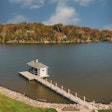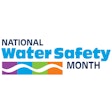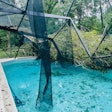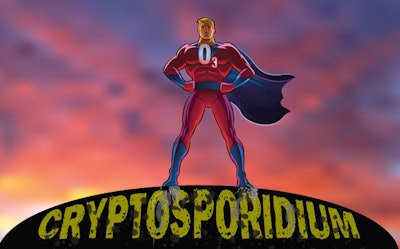
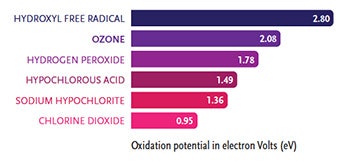 Click to enlarge
Click to enlarge
Despite widespread efforts to eradicate water-related illnesses, outbreaks of cryptosporidium in public pools, splash pads and waterparks doubled between 2014 and 2016, according to a recent report from the U.S. Centers For Disease Control and Prevention.
At least 32 outbreaks caused by Cryptosporidium parvum (also known as "crypto") linked to swimming pools or water playgrounds in the U.S. were reported in 2016, compared with 16 outbreaks in 2014. By comparison, 20 crypto outbreaks linked to swimming were reported in 2011, 16 in 2012 and 13 in 2013.
Those outbreaks highlight the ongoing challenges that public aquatic facilities face with crypto due to how difficult it is to kill and the small number of germs needed to cause infection. For example, Arizona identified 352 people sick with crypto from July to October 2016, while there were no more than 62 cases for any one year from 2011 through 2015. Ohio identified a staggering 1,940 people ill with crypto in 2016, while there were no more than 571 cases for any one year from 2012 through 2015.
The parasite, technically known as an oocyst (pronounced "oh-oh sist"), features a hard protective shell and spreads when people swallow something that has come into contact with the feces of a sick person, such as pool water contaminated with diarrhea. It can be fatal for people with compromised immune systems.
According to the CDC report: "Crypto is the most common cause of diarrheal illness and outbreaks linked to swimming pools or water playgrounds because it is not easily killed by chlorine and can survive up to 10 days in properly treated water. Swallowing just a mouthful of water contaminated with crypto can make otherwise healthy people sick for up to three weeks with watery diarrhea, stomach cramps, nausea or vomiting, and can lead to dehydration."
SPREADING CONCERN
 A closeup of a crypto parasite.
A closeup of a crypto parasite.
The report was released on May 18 and has since led to a firestorm of coverage, public concern and advisories from public health officials across the U.S and abroad.
"Most of us love to spend time in the pool, and we assume pool water won't make us sick. And generally that's true. Most pool operators do a great job of maintaining a healthy swimming environment," said Dan Luebbert, assistant director of the Platte County Health Department (Kansas City, Mo.) in an interview with the Kansas City Star. "Unfortunately, there are some germs that are tough enough to survive in even the best maintained pools. That's why it's so important for swimmers to be responsible."
Although crypto contamination can occur in any body of water, it is almost exclusively a problem for public aquatic facilities, including not only pools and spas, but splash pads and waterparks as well. As indicated by the numbers above, a single outbreak can make hundreds of people sick.
According to the CDC, it is not clear whether the number of outbreaks has actually increased or if improved surveillance and laboratory methods are leading to better outbreak detection.
In 2010, the CDC launched first U.S. DNA fingerprinting–based tracking system for illness caused by a parasite. Called CryptoNet, the system helps states detect and control outbreaks by identifying which types of crypto are infecting people. For example, Arizona state officials used CryptoNet in 2016 to confirm the spread of a particular type of crypto in multiple facilities in the Phoenix area.
The CDC is currently working to upgrade CryptoNet with more advanced DNA fingerprinting techniques. The improved system will enable examination of results combined with information on patients' activities prior to infection, which CDC officials believe will help the CDC and its public health partners develop more effective strategies in preventing outbreaks.
Preventing crypto outbreaks is also one of the objectives of the Model Aquatic Health Code. First published in 2014, the voluntary set of guidelines calls for secondary "pillars" of sanitation, specifically UV and ozone, as a way to reduce halogen levels, eliminate disinfection byproducts and prevent infectious outbreaks, especially crypto — which, while highly resistant to chlorine treatment, is readily killed by ozone.
According to the MAHC there's a key distinction between the terms "secondary" and "supplemental": "All secondary disinfection systems must provide a minimum of 3 log (99.9 percent) inactivation of Cryptosporidium parvum in the full flow, prior to return of the water to the pool or aquatic feature at the minimum turnover rate. Secondary disinfection systems shall be designed to achieve a minimum 3-log (99.9 percent) reduction in the number of infective Cryptosporidium parvum per pass through the secondary disinfection system. Aquatic venues that do not require secondary disinfection systems may install supplemental treatment systems for the purpose of enhancing overall system performance and improving water quality."
A VAST DIFFERENCE
In order to determine the specific amount of the disinfectant required to inactivate or destroy a microbe, the Environmental Protection Agency has determined precise Ct values, which are the product of the disinfectant's concentration (C, expressed in mg/L) and the contact time (t, expressed in minutes). Ct values are calculated specifically to the percentage of microbial kill, or log reduction, e.g. 1-Log = 90.0 percent, 2-Log = 99.0 percent or 3-Log = 99.9 percent inactivation of the particular microbe.
While chlorine has been proven effective in killing a range of pathogens common to pools and spas, crypto is a very different story.
In a 2012 report published in the Journal of Water and Health, a group of leading researchers wrote: "Cryptosporidium is one of the most important waterborne pathogens associated with RWI as it causes severe gastroenteritis (Cryptosporidiosis). [It] has been associated with rivers and lakes, most likely introduced via animal vectors. Traditional treatment technologies, such as chlorination, have been shown to have limited efficacy against C. parvum oocysts."
"Cypto is extraordinarily resistant to chlorine," says Beth Hamil, a consultant for the ozone industry and one of the pool and spa industry's leading authorities on the subject. "The Ct value for chlorine to achieve a three-log reduction in Crypto is 15,600. That equates to 20 ppm for 13 hours. The Ct value for commercial ozone systems is 1.52. It's literally 10,000 times more effective."
In practice, that vast difference in efficacy means chlorine treatments can only be used effectively as a reactive measure once an outbreak has already happened. This requires superchlorinating the water, which can shut down a facility for a day or more.
In order to kill crypto as it is introduced to the water, the system must have a properly sized and installed ozone system that eliminates the organism before it's ingested.

According to the MAHC, for ozone systems must include the following to function properly:
- Ozone generator
- Injector/injector manifold
- Reaction tank (contact tank)/mixing tank/degas tower
- Degas valve (if applicable, to vent undissolved gaseous ozone)
- Ozone destruct (to destroy undissolved gaseous ozone)
- ORP monitor/controller
- Ambient ozone monitor/controller
- Air flow meter/controller
- Water backflow prevention device in gas delivery system
While proper chlorination and water balance is critical in preventing other common diseases, such as E. coli, Staphylococcus aureus or Pseudomonas aeruginosa, crypto clearly requires a different method. Crypto can be removed by reverse osmosis filtration. In cases where it's contaminated public water systems, health officials have advised boiling water before drinking or bathing in it.
"Certainly there are other ways to kill it," Hamil says, "but in pools by far the best way to prevent outbreaks is with an adequately sized ozone system."
Protect Your HealthTo help protect bathers and prevent outbreaks, the CDC recommends a handful of measures for swimmers and parents:
"One of the main problems is that it's virtually impossible to avoid ingesting some water when you swim," Hamil says. "Whenever you breathe, the water on your lips and your nose will get into your system. You swallow it involuntarily. While common-sense measures are helpful, to prevent outbreaks the pool has to be properly sanitized." |
The UV ConnectionWhile there is no question that ozone kills crypto, manufacturers of UV systems also lay claim to effectively ridding water of the pathogen. Unlike ozone, which is a powerful oxidizer and kills crypto by the chemical process known as lysing, UV has a more sublime means of disinfection; it inactivates the DNA of bacteria and oocysts, such as crypto, rendering the pathogens unable to reproduce. UV light also differs as a sanitizer from ozone or chlorine in that it does not oxidize organic compounds; it only disinfects as water passes through the UV chamber and can be impacted by turbidity. The use of UV gained a boost back in 2006 when the EPA issued its Long Term 2 Enhanced Surface Water Treatment Rule, which defined guidelines for using UV to treat public water. The rule states: "Interest in using ultraviolet light to disinfect drinking water growing among public water systems due to its ability to inactivate pathogenic microorganisms without forming regulated disinfection byproducts. UV light has proven effective against some pathogens, such as cryptosporidium, that are resistant to commonly used disinfectants like chlorine. "The rule requires additional treatment for some PWSs based on their source water cryptosporidium concentrations and current treatment practices. UV disinfection is one option PWSs have to comply with the additional treatment requirements." |
All Night LongDuring preparation for this story, Hamil shared an idea that she's been promoting as a way to maximize the efficiency of ozone's powerful oxidative and disinfecting power. She suggests turning off the chlorine feeder at night while letting the ozone run by itself while the pool is empty. Her reasoning is both simple and compelling: "Running the ozone system without the chlorine during off hours enables to ozone to more effectively destroy disinfection by products," she says. |


































